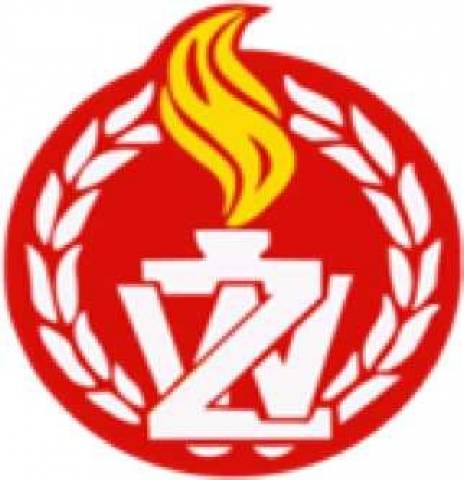INSIGNIA
In addition to military uniforms, gendarmes wear scarlet berets (at the picture the formation’s banner is also visible).
HISTORICAL OUTLINE
1812 - The first Polish unit of the Gendarmerie was formed;
1918 - 1945 - Military Gendarmerie before and during the II WW;
1990 - Contemporary MG was established;
2001 - The Polish Parliament adopted the Act on the Military Gendarmerie.
STRUCTURE
The Military Gendarmerie’s strength currently amounts to three thousand men and spreads across the whole country, usually performing their duties close to tactical units and groups.
The territorial structure (of territorial and specialized units) is shown in the chart
bellow:
Each Territorial Unit is responsible for a certain area with all general tasks assigned to the Military Gendarmerie. MG Detachments are subordinated to Territorial Units in smaller areas are . Additionally, the Gendarmerie Units dedicated to particular role - logistic, two specialized (manoeuver and anti-terror/close protection) as well as centre for training and education.
The Gendarmerie HQ’s structure reflects the tasks and activities the formation fulfils. Apart from sections and branches supporting and controlling the formation from within, there are three core segments related to primary tasks: Investigation Segment, Prevention Segment and Staff that is responsible for the administrative, technical and logistic support.
CAPABILITIES/TASKS
There are three primary functions which are fulfilled by the Military Gendarmerie:
- maintaining law and order within the armed forces;
- preserving the security of forces engaged in operations;
- engaging in tasks related to crisis management.
In order to carry out the above functions several tasks have to be conducted. The tasks are listed in Article 4 of the Act on Military Gendarmerie:
- enforcement of military discipline;
- identification and prevention of criminal activities (including fiscal one), in the Armed Forces, Effective and operational pursuit of criminals, prevention and revealing of symptoms, which might result in crimes;
- protection of life and health of people and military property from attacks and dangers threatening them;
- protection of public law and order, especially in military areas and public property;
- analysis of professional soldiers’ property statements and report of the respected conclusions to the Minister of Defence;
- prevention of crime and offences, especially alcoholism and drug addiction, conducted by persons to whom the MG has the legal authority;
- cooperation with other security and public order institutions both national and foreign;
- participation in civil relief operations, search and rescue missions and engagement in crisis operations resulting in the protection of life and property;
- conducting of tasks described in other documents.
As a summary the tasks fulfilled by the Gendarmerie can be divided into key areas: prevention, investigation and general administrative, technical and logistic support.
The Military Gendarmerie is heavily involved in the crisis management situations. The formation can be used in various scenarios, these include - preventive investigation and criminal activities in target areas, countering the results of catastrophes and crisis, search and rescue missions, maintain public order in crisis zones, protection and isolation of danger zones, traffic control and escorts.
Additionally, the Gendarmerie is a part of the so-called Anti-corruption Shield which, in cooperation with other bodies and institutions, prevents and investigates corruptive proceedings on the national level. At the top of the Shield is the Prime Minister with several institution reporting to him and exchanging information to better secure the process.
The involved institutions are: Central Anti-corruption Office, Internal Security Agency, Military Counter-intelligence. The Ministry of Defence is directly related to the primary bodies, with the Gendarmerie forces in a supporting role.
With reference to the Anticorruption Shield, the Ministry of Defence has its own small Anticorruption Shield, which consists of the Gendarmerie, Anticorruption Office and the Military Counter-Intelligence, which work for the benefit of the Ministry of Defence itself.
JURISDICTION
According to Article 3 from the Act on the Military Gendarmerie the formation has legal authority over:
- soldiers in active duty for: crimes against other soldiers; crimes against military property; crimes committed in military facilities;
- former soldiers but wearing uniforms and military symbols and insignia;
- military civilian personnel for actions committed during work in the respective military institution;
- persons currently present in military facilities;
- persons under military court jurisdiction;
- non-military related persons, who collaborate with the above-mentioned persons aiming at cousing harm of the military personnel or infrastructure;
- soldiers and military personnel of foreign countries if their current residence is the Polish territory and the commenced crimes relate to their scope of duty, unless a separate bilateral agreement states otherwise.
The Military Gendarmerie will be authorized to run procedures not only in military courts related cases but also against soldiers in common court cases. From 1 July 2015, the authority has been enhanced in accordance with the amendment of the article 312 of the Code of Criminal Procedure.
